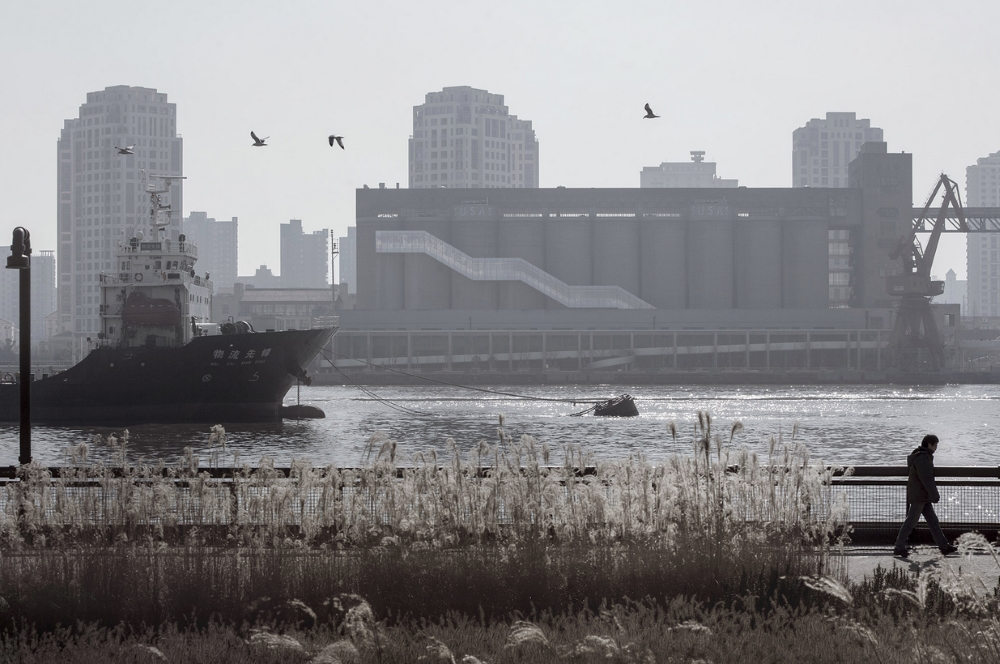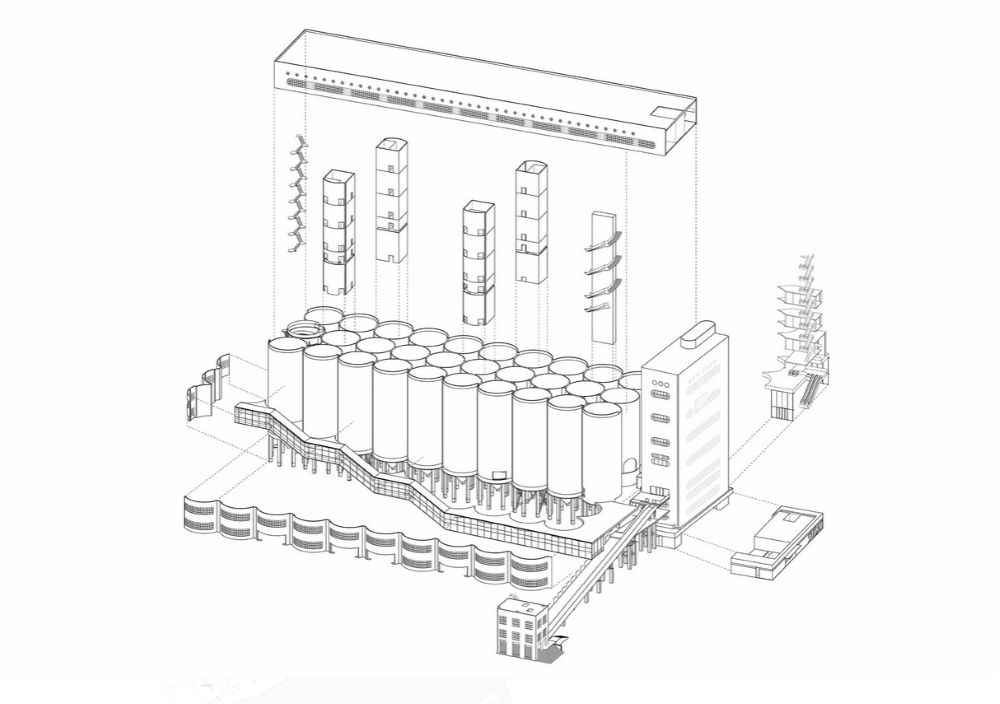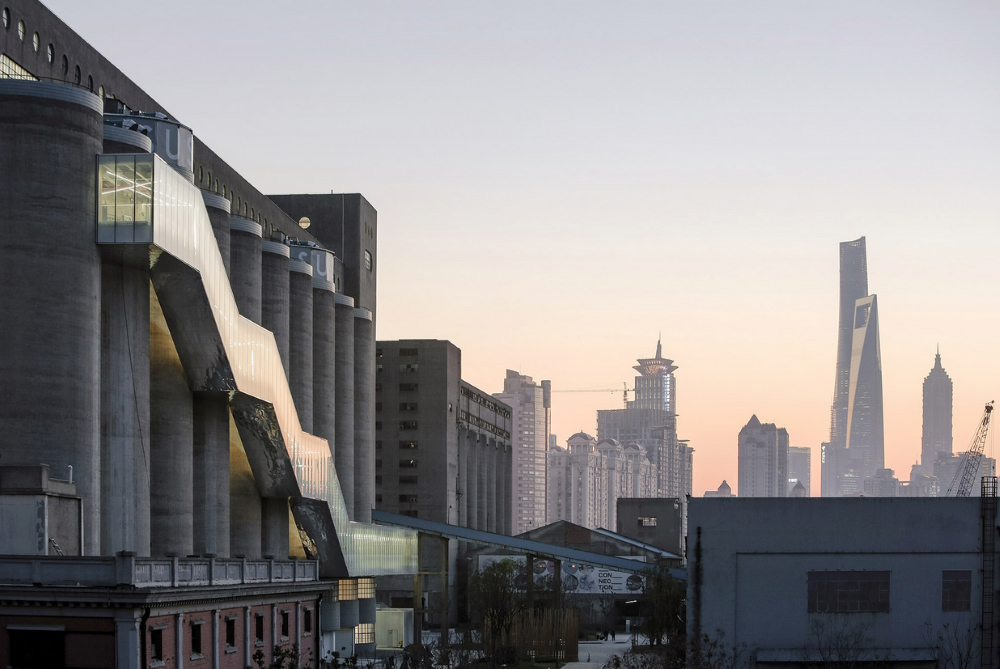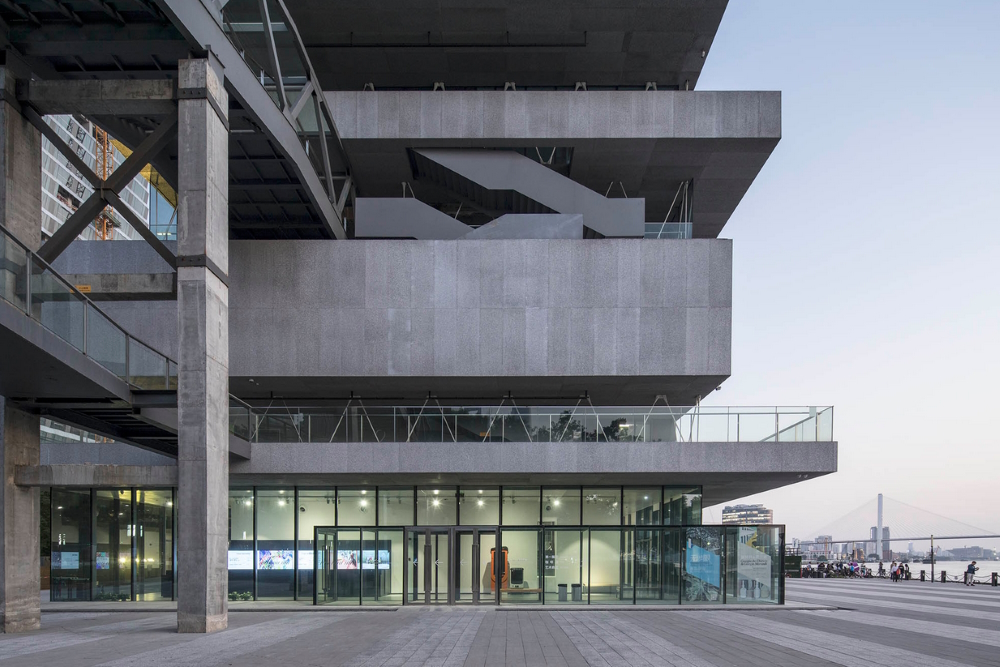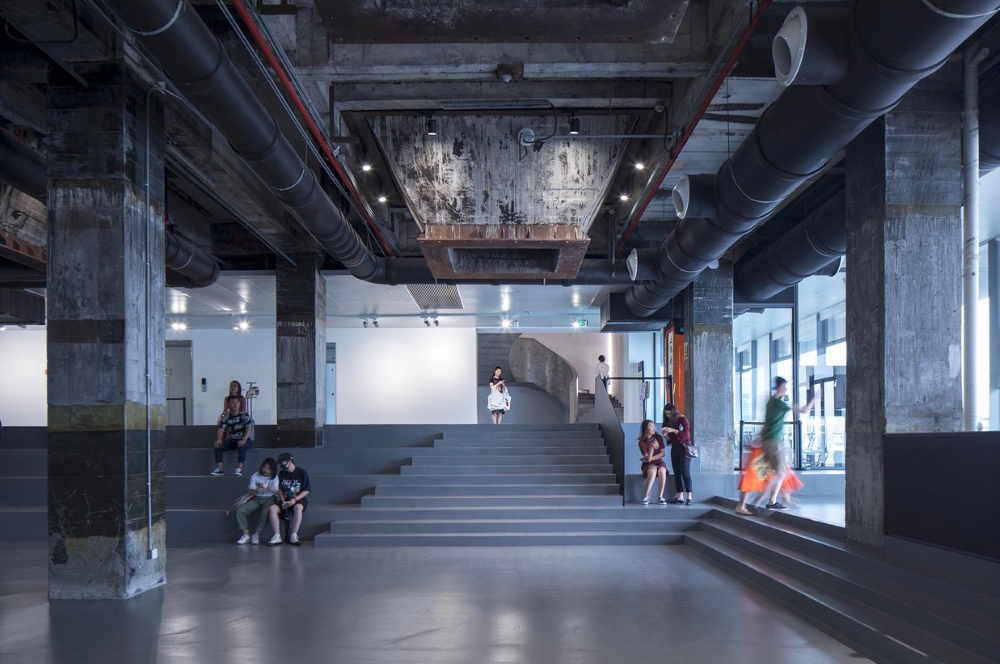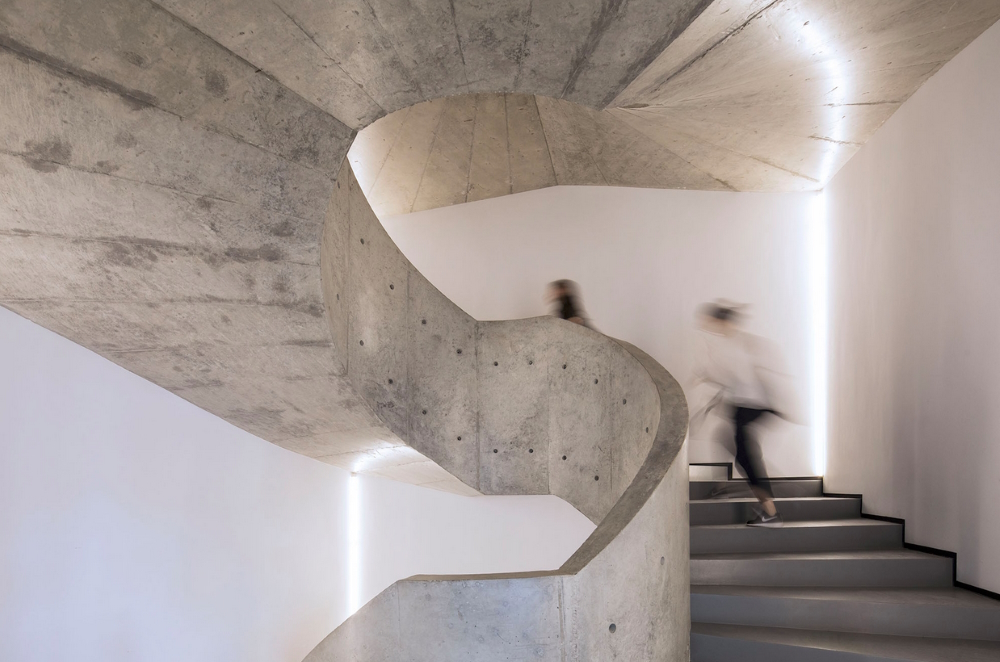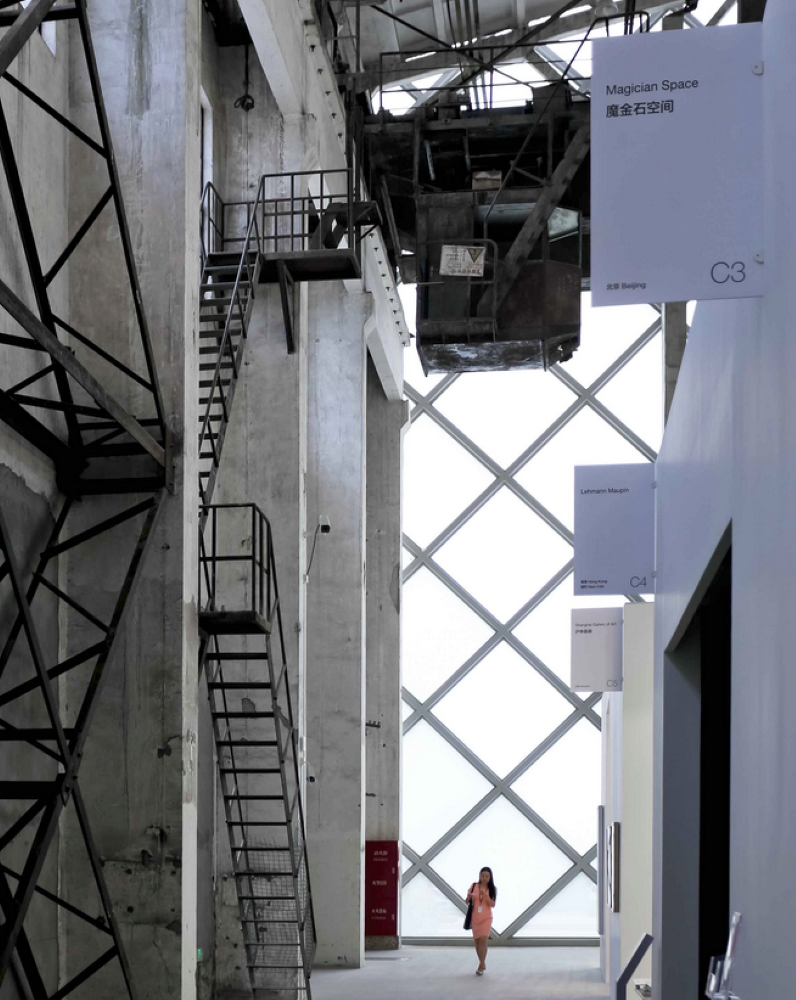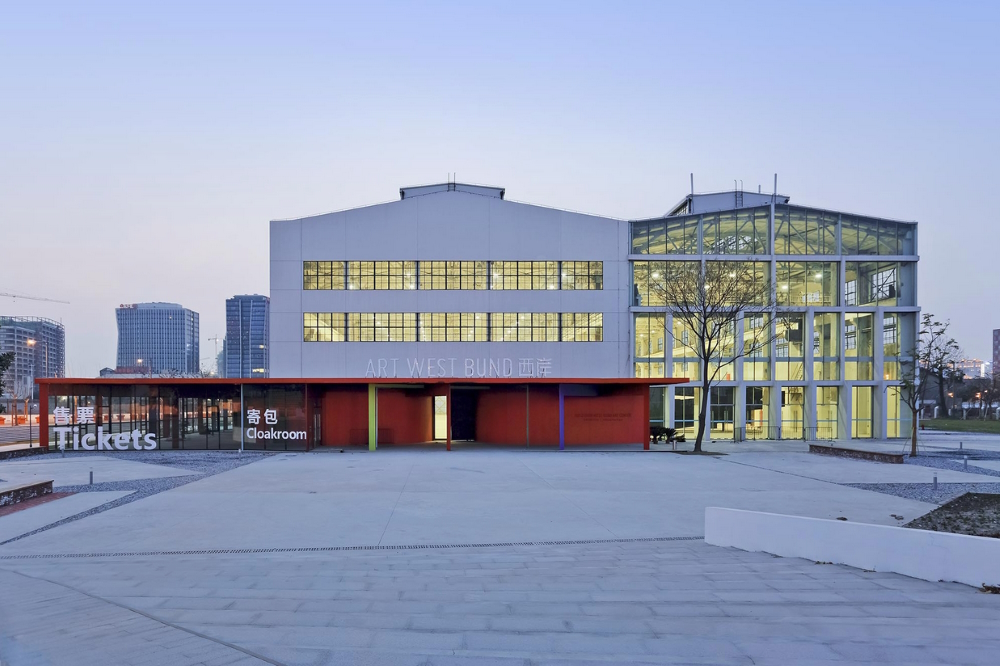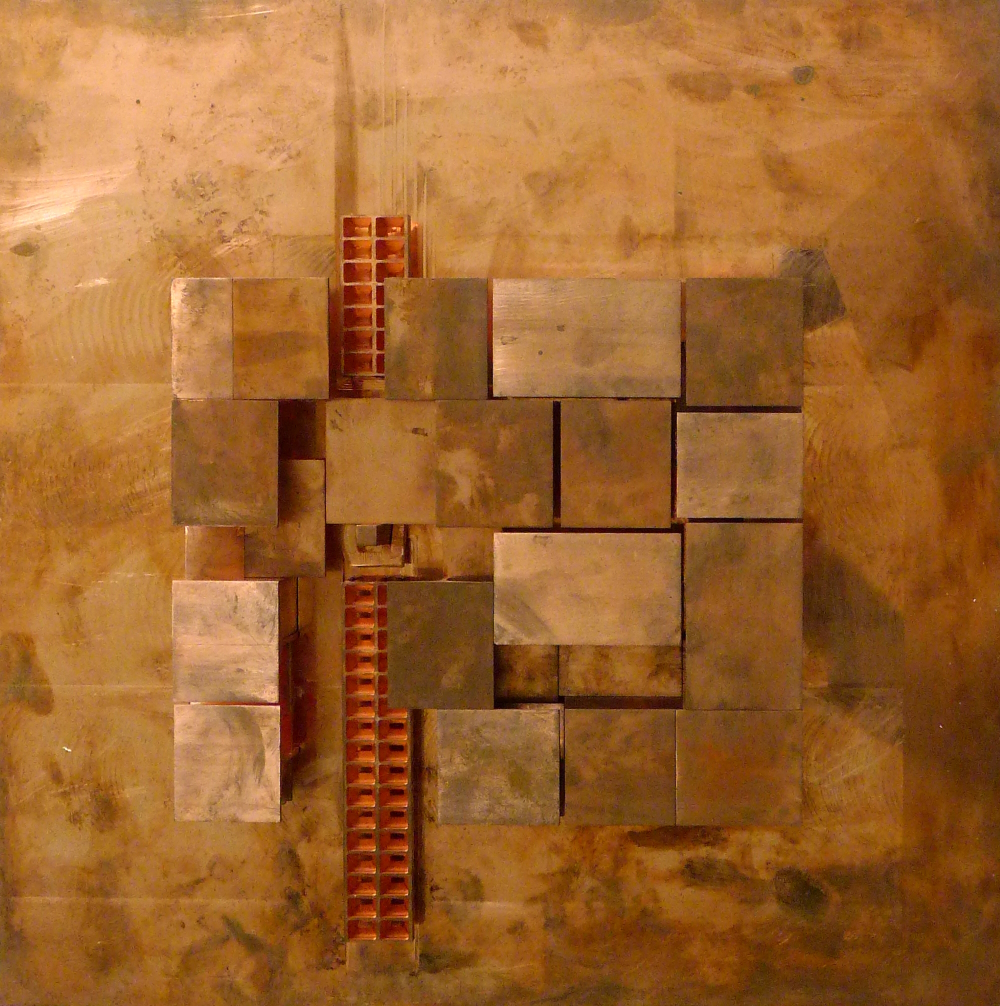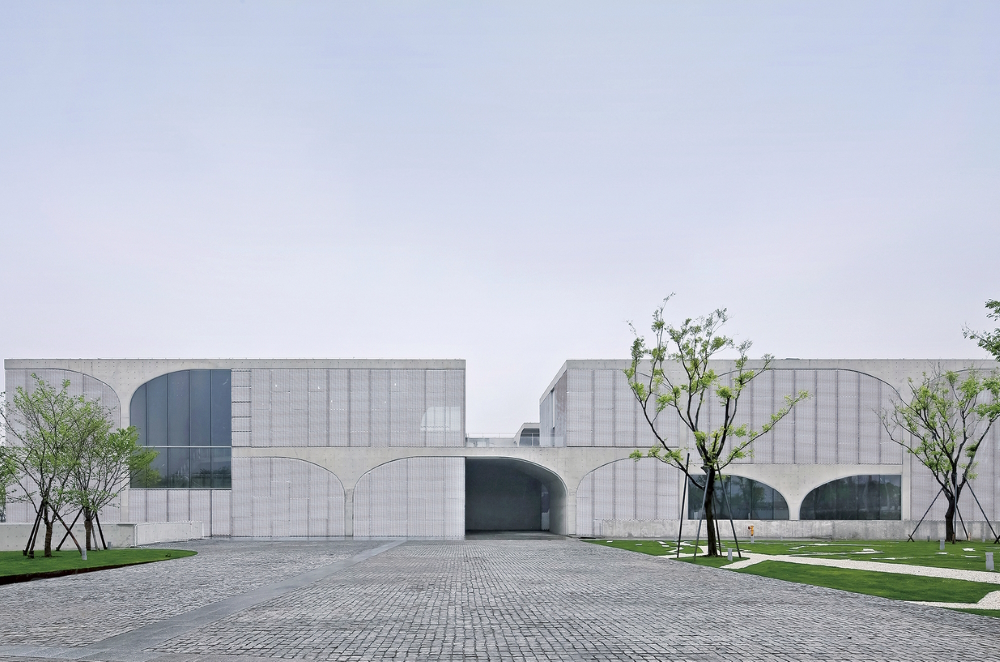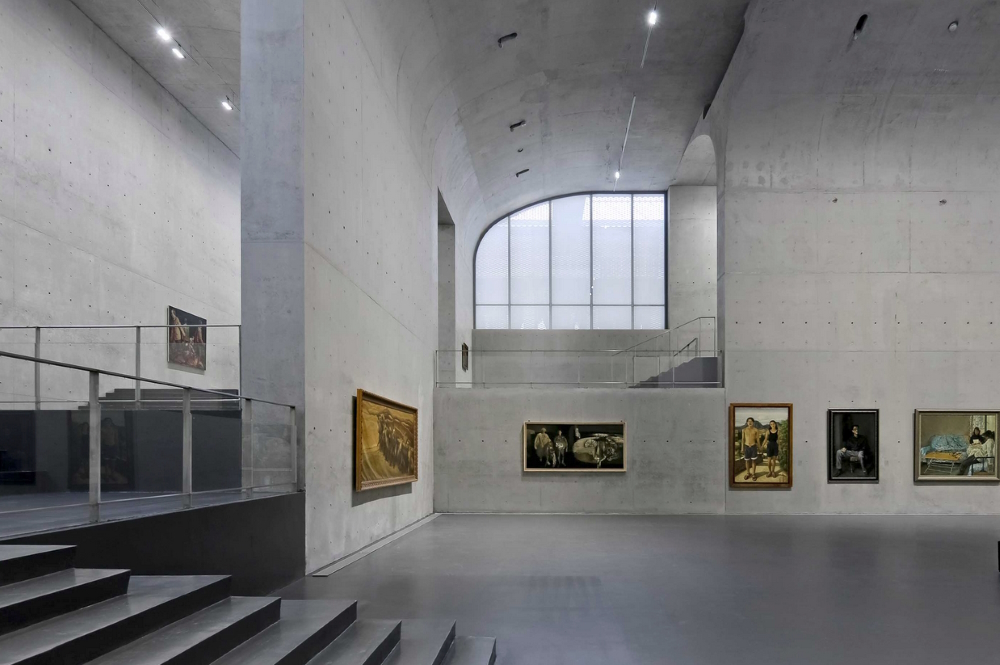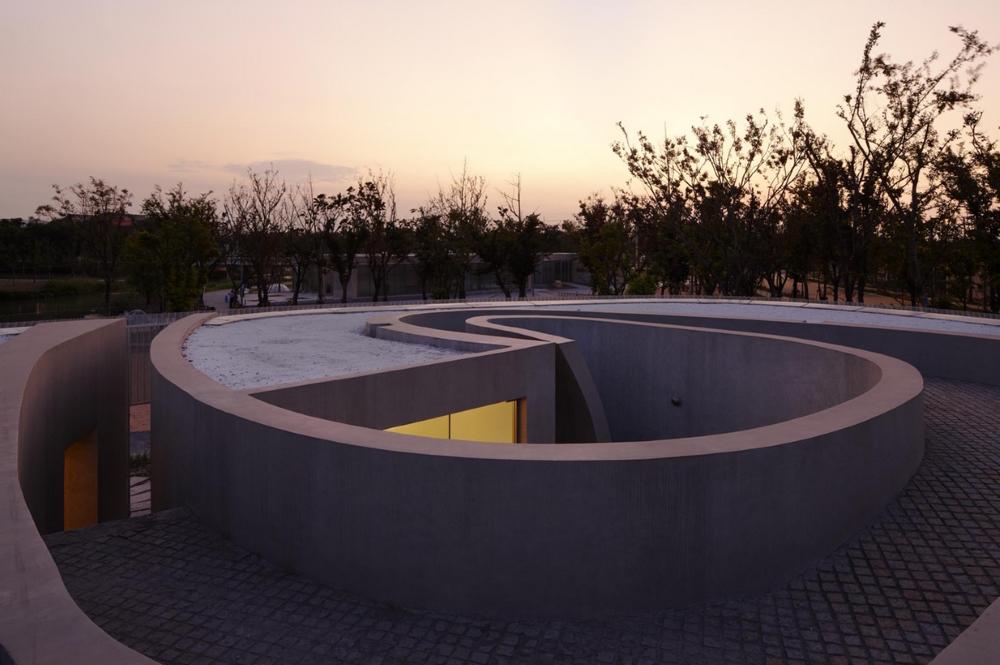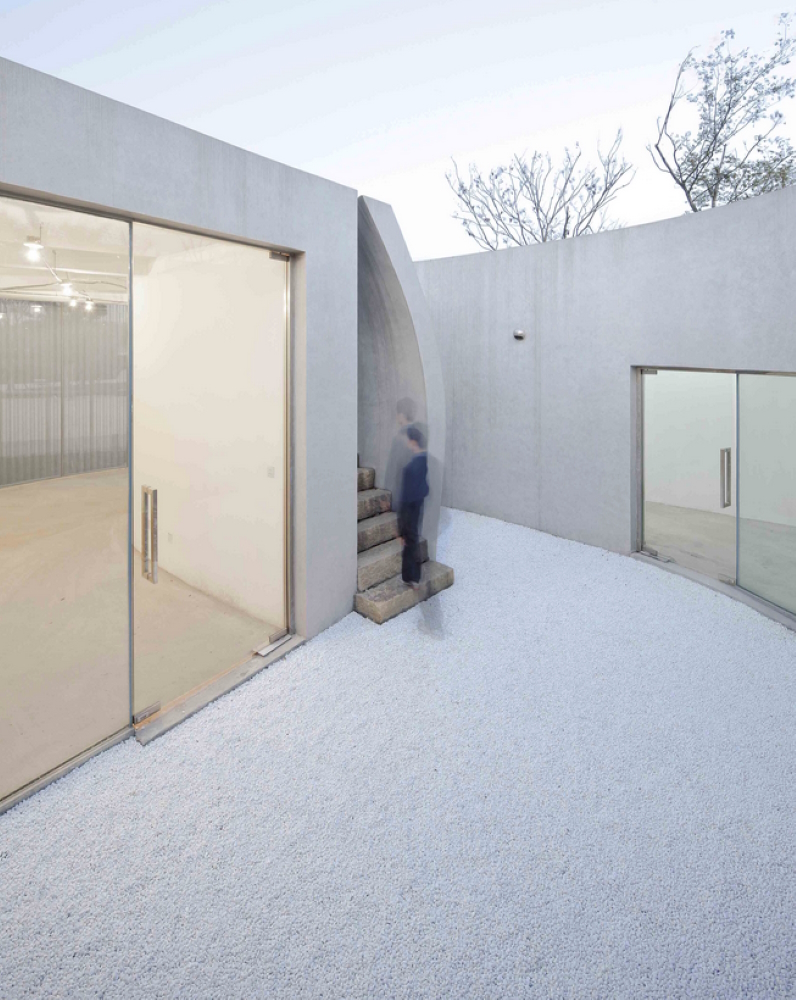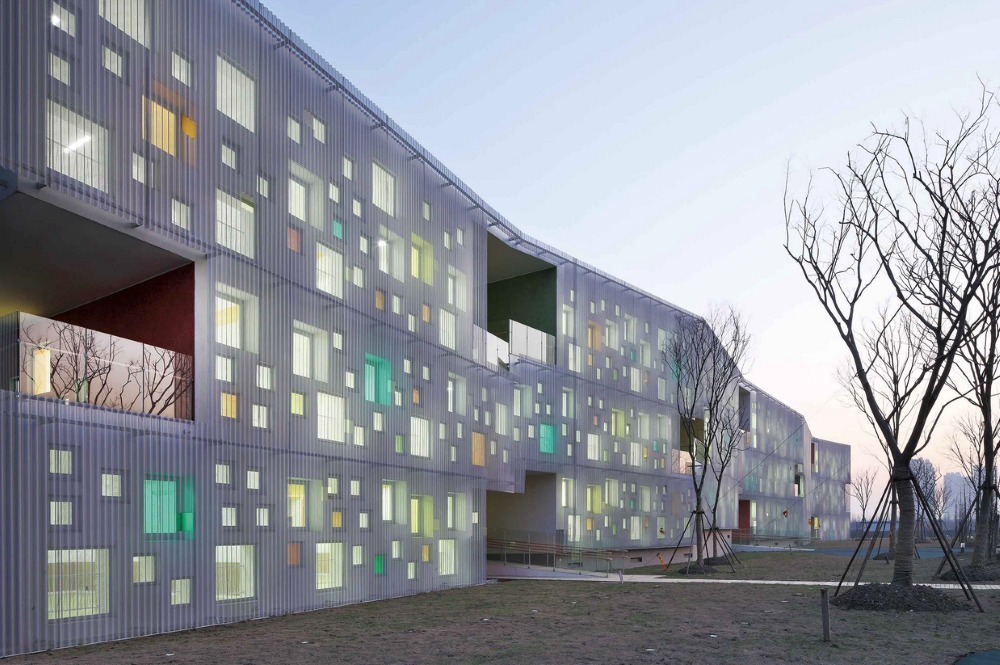Liu Yichun
Co-founder & principal architect of innovative Atelier Deshaus
China
„One of the 10 most avant-garde practices“. Architecture Record selected Atelier Deshaus co-founded by Liu Yichun for that exlusive list. The choice of this magazine that „is widely-recognized as an important historical record of the unfolding debates in architectural practice, history and criticism in the 20th century United States“ (Wikipedia) represents one of many recognitions for an Asian architectual company that’s the exception to the rule. It “stays away from China’s commerce-driven mainstream architectural culture to focus on utterly independent designs“ (uchicago.edu) – in particular as noted by floornature.com: „conversion and expansion of abandoned buildings and relics of the industrial past [...] Their projects offer examples of how former industrial sites can be transformed into attractive new public places and take on new functions even while maintaining their emotional and cultural ties with the local community.“
Liu Yichun
Co-founder & principal architect of innovative Atelier Deshaus
China
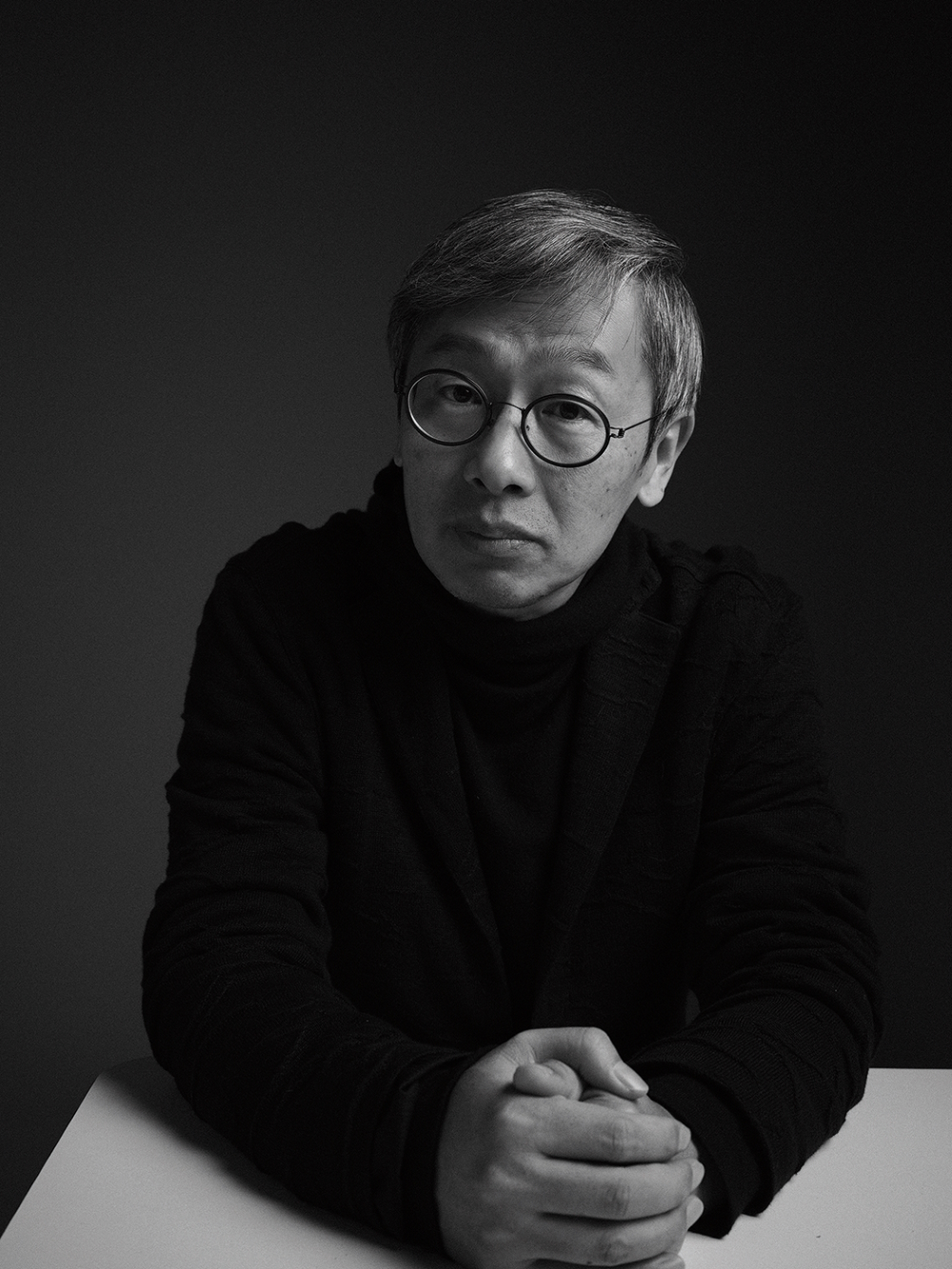
„Make new from old“. This common saying describes perfectly one speciality that Atelier Deshaus became famous for internationally. The Shanghai-based practice converses industrial ruins into fresh and attractive sites with a new function by preserving existing structures during the renovation process. Representative examples are these: a coal dock, located along Shanghai‘s Huangpu River, that included a preserved coal-hopper-unloading-bridge and an existing two-story underground parking garage, became Long Museum West Bund in 2014. The same year Shanghai’s Aircraft Manufactory turned into The West Bund Art Center. The Laobaidu coal bunker was transformed into the Modern Art Museum in 2016. Out of a 80,000-ton silo warehouse, being the most powerful industrial heritage on Minsheng Wharf, arised Silos Art Centre in 2017.
The conversion topics of Atelier Deshaus‘ wide varied works are always done as every other commisioned work with a special twist – the focus on sensitive urbanity. How that is realized the practice’s co-founder and principal architect explained in an interview with world-architects.com. Liu Yichun is quoted saying the following: „In considering how to work with existing industrial ruins, we have begun to shift from an initial interest in the abstract spatial experience of traditional Chinese gardens to the use of strategic methods such as Yin Jie Ti Yi in garden-making and how to maintain a sense of intimacy in a public space. Yin Jie Ti Yi, these four characters come from a garden manual entitled The Craft of Gardens (Yuan Ye) written by Ji Cheng in the late Ming dynasty. “Yin” means seizing productive contextual forces; “jie” refers to taking advantage of the surroundings; “ti” means formal states of rational existence; and “yi” refers to being appropriately situated. These references also influence our design of new buildings: to connect the quality of the interior space with the expression of structure, for example, or to define and establish the external image of the architecture by connecting structure and space with a particular site, etc. Looking at the issue in a broader context, we are generally still very much focused on the contemporaneity of Chinese architecture.“
Liu Yichun (* 1969 in a village in Southern China) graduated from the faculty of Architecture at Shanghai‘s Tongji University. Afterwards he worked as an architect for the Architectural Design Institute, Guangzhou. Encouraged by his mentor on site, Liu Yichun decided to continue his architectural education, accomplished his master's degree in Architecture at Tongji University in 1997 and served as the Chief Architect of the Architectural Design Institute there from 1997 to 2000. Realizing that his creativity and independent thinking on too many commercial projects gradually neglected, the thirty something founded his own office in 2001.
Besides the mentioned conversion projects Atelier Deshaus emphasises on kindergartens, parks, temples, art galleries, museums – and lives up to its name as avant-garde: the Spiral Gallery in Jiading New Town „is inserted by a spiral that creates continuously changing physical experiences“ (Wikipedia); their Kindergarten in this Shanghai suburb „has a vertical arrangement of different heights that make the building dynamic and produce an interesting interior for children to play with“ (Wikipedia). Liu Yichun and his team stand for a new Chinese style in architecture. What this means he described while talking to movingcities.org: „All our buildings express our efforts to re-imagine the culture of this area around Shanghai, the Jiangnan culture. Memory is very important to us. Our attitude is a fusion of the conventional and the contemporary.“ But that’s not all. „We like to work in a careful way. In China one has to give up control. The country is developing so rapidly; the pace is too fast. Faced with this situation, we would like to create a slower, more cautious rhythm [...] We recognize how important it is to observe, to think, to reflect – and then to design.“
Atelier Deshaus has received numerous awards, showcases its works worldwide in important exhibitions at places like Museum of Modern Art/ New York and prestigious magazines such as A+U, Wallpaper or Casabella. The 256 pages of the richly illustrated book ‚Atelier Deshaus: Architecture 2001-2020‘ offer deep insights into the creations of this innovative practice.
Liu Yichun who has widely lectured at renowned universities like Harvard among others, lives and works in Shanghai (China) - the third most populous city in the world and nicknamed „Paris of the East“.
Interview April 2023
Reuse, renew, recycle: re-imaging the culture of an area
INTUITION/IMAGINATION
How does intuition present itself to you – in form of a suspicious impression, a spontaneous visualisation or whatever - maybe in dreams?
Intuition is always triggered by the object. Of course, it’s more dependent on the subject’s perception, a sensitivity. Some people are naturally sensitive, while others acquire sensitivity through experience. For me, when I’m designing a specific building, immediately after arriving at a particular place, a vision of what the building might look like and feel like emerges in my mind, based on existing information. Although it may not be the final result, there are always some feelings that persist.
Will any ideas be written down immediately and archived?
No. My initial intuition in the first place always lasts for a long time.
?: How do you come up with good or extraordinary ideas?
There are always some ideas that arise emerge. But it’s not always easy to judge whether they are good enough. I always feel that an idea is worth pursuing when it solves more problems. Accordingly, it gets closer to the unique answer to the essence of things. Then, there is always an appropriate form to present it.
?: Do you feel that new creative ideas come as a whole or do you get like a little seed of inspiration that evolves into something else and has to be realized by endless trials and errors in form of constant developments up until the final result?
Sometimes, when the right time comes, a whole idea emerges in your mind, which is exactly what you have been wishing for. Most often, however, a partial idea gradually leads to the whole.
What if there is a deadline, but no intuition? Does the first fuel the latter maybe?
Intuition always exists from the beginning. If it doesn't, it will be more of a rational design evolution through iterations based on experience. Time constraints do not promote intuition.
INSPIRATION
What inspires you and how do you stimulate this special form of imaginativeness?
Anything can be inspiring, such as an existing object on site, its relationship with the surroundings or natural phenomena, and so on. In my architectural design, structure often becomes an important creative factor. Converting various demands of various elements into a particular structure is often the starting point for a unique form.
?: How do you filter between ideas worthwhile pursuing and bad ones that you just let go of?
Perhaps this relies on intuition, the ability to judge the rationality and form of things.
Has it to appeal to you primarily or is its commercial potential an essential factor?
Any need has the potential for development, and ultimately, it depends on us to judge which ones are important and worth paying attention to.
Do you revisit old ideas or check what colleagues/competitors are up to at times?
I always write some articles, or when I need to give a speech, I review past designs, old ideas, and current ones. There must be consistency between them. Peers are often a mirror for me, and they help me see the value of what I am doing.
CREATIVITY
Which time/place/environment suits your creative work process the best (tranquillity or pressure) and which path do you take from theory/idea to creation?
I prefer a quiet environment, but architectural design often exists under various pressures. This is always the case, at least in China. I enjoy a literary imagination, which finally returns to concrete structure and technical construction.
What is better in the realization process: speed and force creativity i.e. grasp the magic of the moment, or a slow, ripening process for implementation/elaboration?
In China, almost all projects have unimaginable speed requirement of design speed. Design often requires means making instant decisions and moving forward in a certain direction. What we can do is to ensure that all designs are based on a enduring thinking, which is what I mentioned earlier about the importance of consistency.
?: Do you have any specific strategies you use when you are feeling stuck creatively?
Architectural design, unlike art making, always has the potential to move forward in a certain way. It's just that the breakthrough moment you are looking for can come at the beginning or at the end. Excessive pressure is not necessary.
How important are self-doubt and criticism (by others) during such a process i.e. is it better to be creative on your own, only trust your own instincts, or in a team?
Self-reflection and criticism from others are both important. We need to know the value of what we are doing in a broader historical and realistic context. And most of the time, these values are emerging through summary and discussion afterwards.
Should a creative always remain true to him-/herself including taking risks & going against the flow or must one, for reasons of (commercial) survival, make concessions to the demands of the market, the wishes of clients and the audience’s expectations?
Of course, one must always stick to him-/herself, take risks, and go against the prevailing trend. External demands and expectations are part of what you need to take care of, but you should guide them, not the other way around.
?: How is innovation still possible if one has established a distinctive style and, just in case, is it good to be ahead of one’s time even one hazards not being understood?
Style is naturally formed. It is not the purpose of innovation, but rather the result of continuous innovation. Novelty in style is not necessarily true innovation. I think it is every creator's dream to lead ahead of their time. Not being understood is not an easy thing to do either.
When does the time come to end the creative process, to be content and set the final result free - or is it work-in-progress with an endless possibility of improvement?
In the design and construction process of architecture, there always seems to be room for improvement. However, every creative process has an end, and contentment lies in letting yourself become an observer of people in a state of excitement, joy, and freedom in the space you created, seeing others excited, free, and joyful in the space you created.
?: In case of failure or - worse - a creativity crisis how do you get out of such a hole?
Move on to the next project
SUCCESS
?: “Success is the ability to go from one failure to another with no loss of enthusiasm.“ Do you agree with Winston Churchill’s quote?
I agree with this statement, but I don't think it has much significance.
?: Should/can one resist the temptation to recycle a ‘formula’ one’s successful with?
Repeating a formula, I think, is not related to temptation. Resisting temptation is always necessary.
?: Is it desirable to create the ultimate/timeless work, but doesn’t “top of the ladder” bring up the question of “what’s next?” i.e. isn’t such a personal peak “the end”?
A timeless work does not necessarily mean a personal peak. But we can only reach a peak before we can go to even higher peaks.
MY FAVORITE WORK:
It is the "vault-umbrella" structure, digesting all the needs and existing conditions into a simple structural unit, that creates a rich, powerful, and uniquely formed art museum.

